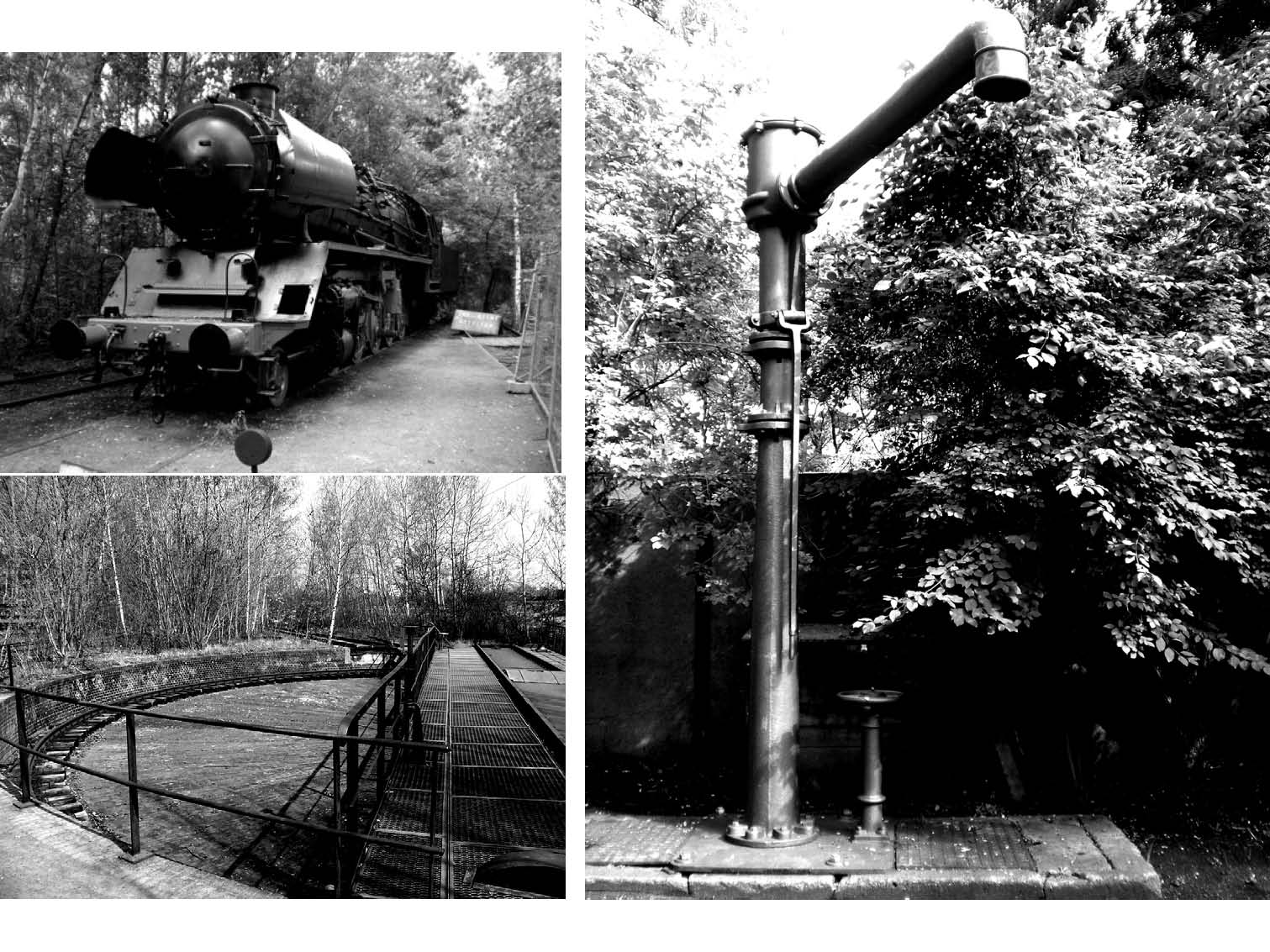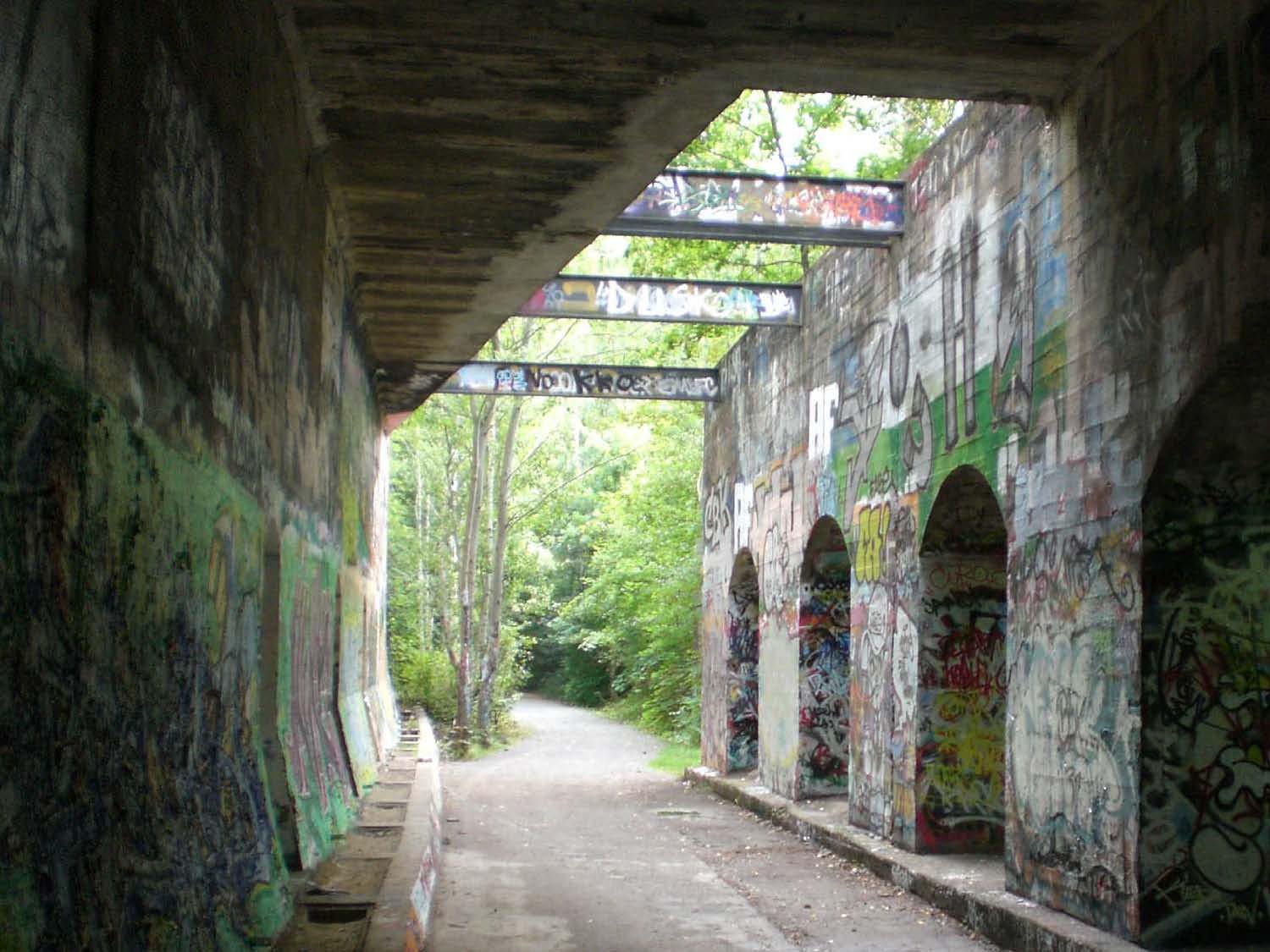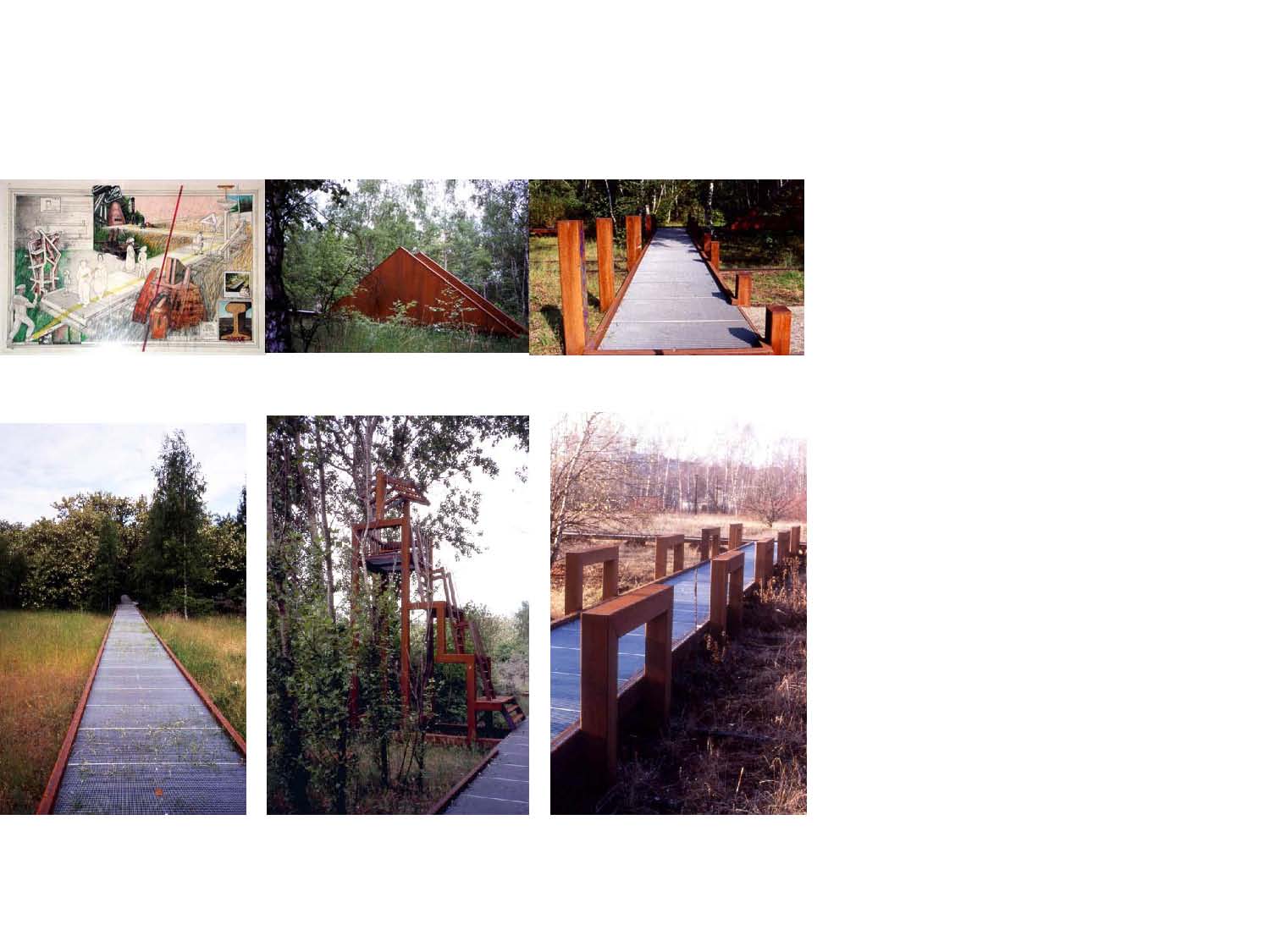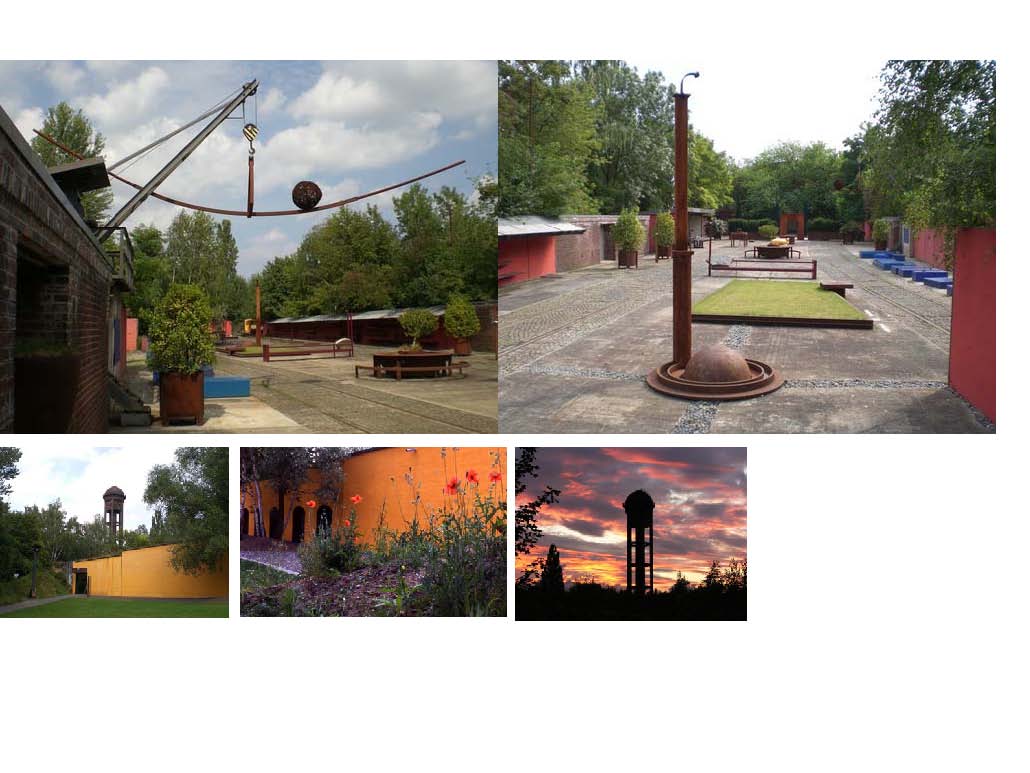Sudgelande Nature Park_cultural landscape |
Relics In the subtle parallel lines marking the landscape, the monumental crumbling walls of bridge and tunnel structures, and the rusting hulks of water tanks and locomotives, the cultural landscape is integrally tied to the ecology of the Sudgelande Nature-Park. The idea of the cultural landscape or Heimat, has deep roots in Germany. More precisely, the notion of the cultural or economic uses of a landscape as contributing to the lands sense of beauty or goodness (Landescerschonerung) is very much in evidence in the landscape of the Sudgelande. The design of Sudgelande does not take a single unified approach to the treatment of the industrial relics on the site. While a locomotive or a piece of loading equipment might be meticulously restored and maintained for its aesthetic and cultural value, in other instances, the tracks and buildings on the site are allowed to be grown over and dissolved by the slow wildering of the landscape. Thus the processes and cycles of cultural and ecological production and evolution are clearly evident throughout the landscape. (Korner, 199)
|
(Source [Clockwise from top left]: 1.) Panoramio, Lok, jojo4u; 2.) Panoramio, Wasserstation, jojo-4u; 3.) Panoramio, Drehscheibe, Herald Krause)
|
(Source: Panoramio, Tunnel, jojo-4u, Accessed 1/10/08) |
New Interventions New landscape interventions and infrastructure designed by the public art collective, Odious, is layered over and interwoven with the existing industrial relics on the site. In many instances, the forms and materiality of Odious’ paths and sculptural installations are intended to relate their interventions to the historic objects on the site. The raised walkways, with their strong parallel linearity and their instantly aged core-ten steel “rails” clearly echo the track infrastructure that they overlay. The new installations are primarily oriented towards allowing access throughout the site and marking the site as a culturally important space (rather than simply a site of neglect). To limit the new interventions to solely providing access would place limit the role of contemporary culture on the site, reducing the park’s users to something akin to museum patrons among the ecological and historical “exhibits”. By including new sculptural installations, contemporary culture is positioned within the continuum of cultural and ecological production and decay. Even so, one might question the necessity of including so many new follies within the landscape or the appropriateness of including only the work of a single producer/designer at a single moment in time. In both its treatment of existing cultural relics and the new interventions on the site, the landscape of the Sudgelande is a clear manifestation of Peter Latz assertion that, one of the primary objects of landscape architecture is “making urban-industrial spaces readable as landscapes… as large-scale works of nature and culture.”(Korner, 207) |
(Source [all above images]: Odious, "Landschaftsgestaltung: Naturepark Schoneberger Sudgelande: 1998-2000," http://www.gruppe-odious.de/landschaft_sued.html. Accessed 1/10/08) |
(Source [Clockwise from top left]: 1.) Panoramio, Kunst, jojo-4u, Accessed 1/10/08; 2.)Panoramio, Kunst, jojo-4u, Accessed 1/10/08; 3.)Panoramio, Wassersturm, jojo-4u, Accessed 1/10/08; 4.)Odious, "Landschaftsgestaltung: Naturepark Schoneberger Sudgelande: 1998-2000," http://www.gruppe-odious.de/landschaft_sued.html. Accessed 1/10/08; 5.)Wasserturm 21.08.07, roba1911, Accessed 1/10/08) |
| Sources and Further Information |
"Nature Conservation, Forestry, Landscape Architecture and Historic Preservation: Perspectives for a Conceptual Alliance." Stefan Korner. in Wild Urban Woodlands: New Perspectives on Urban Forestry. Kowarik, Ingo, and Stefan Korner, eds. Berlin: Springer, 2005. |
| Odious_ http://www.gruppe-odious.de/landschaft_sued.html |
Sudgelande Nature Park Official Website_ http://www.gruen-berlin.de/suedEN/index.php |



